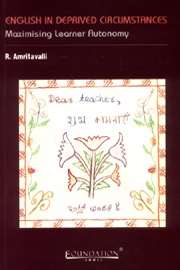6 - Conclusion
Published online by Cambridge University Press: 26 October 2011
Summary
This narration of an experience of teaching has aimed to make a case for investing in learners the freedom to choose reading material for themselves, not merely for extensive reading or reading for pleasure outside the classroom, but as classroom material used for literacy acquisition and the teaching of reading. We hope to have shown the initial feasibility of this strategy. We have explored its usefulness as a way of giving content to intuitive characterizations of the growth of language in the mind, in terms of individual learners' current states of learning and their potential for change or growth. This relationship between a learner's current state and the kind of exposure or intervention that will be of most use in furthering learning has been characterized variously as input at the “i+1” level, given a learner at the level i (Krashen 1985), or intervention located in the Zone of Proximal Development (Vygotsky 1978). We have argued that given the internal, hidden nature of learning as a mental process, the learner is the best judge of these levels or zones of development; thus our teaching interventions must be guided by learner preferences.
One concern was to ascertain whether and how the granting of such autonomy to the learner might depend on the learner's own readiness in terms of linguistic and cognitive maturity.
- Type
- Chapter
- Information
- English in Deprived CircumstancesMaximising Learner Autonomy, pp. 76 - 82Publisher: Foundation BooksPrint publication year: 2007

